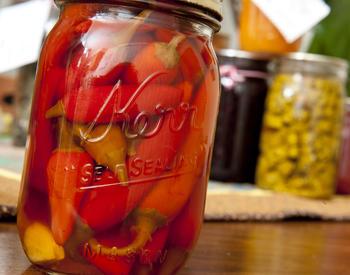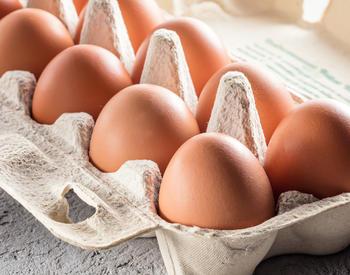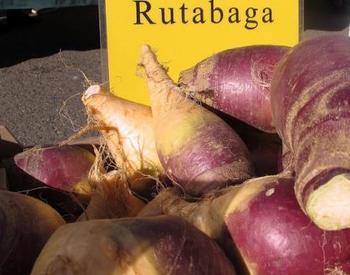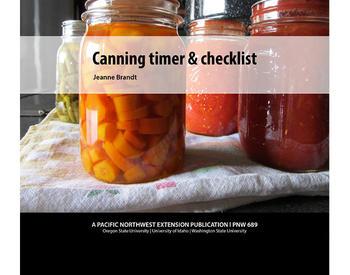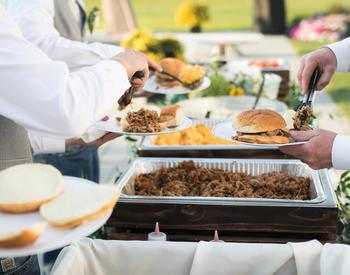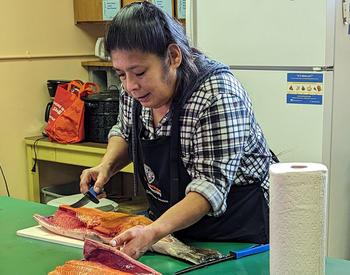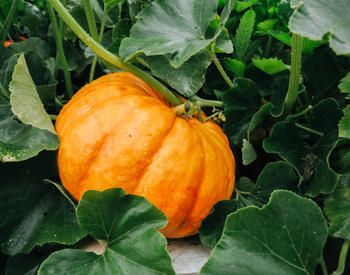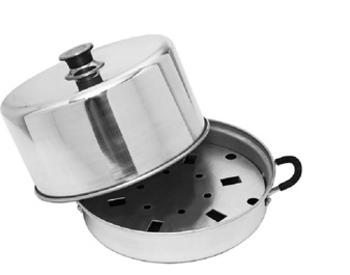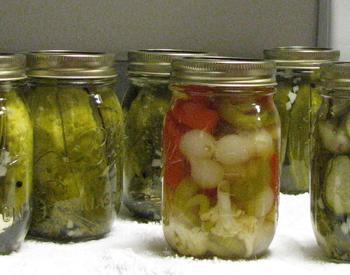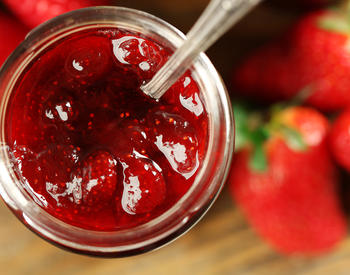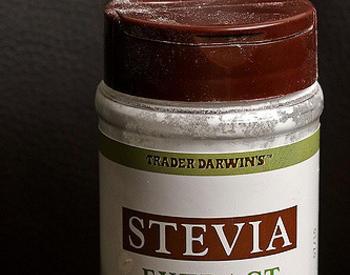Download this publication as a PDF
| Problem | Cause | Other Information |
|---|---|---|
| Hollow pickles | Faulty growth or over-mature. Fermentation too rapid. Holding cucumbers too long before brining. Too high temperature during fermentation. |
Since hollow cucumbers usually float they can be picked out easily when the cucumbers are washed. Use these cucumbers for relishes or chunk pickles. Pickles are safe to eat. |
| Dark pickles | Use of ground spices. Too much spice. Whole spices left in jar. Iodized salt (very rare). Minerals from hard water or utensils, especially iron. Overcooking. |
Use whole spices and do not pack spices in jar. Use stainless steel utensils and soft water. Pickles are safe to eat. |
| Light and blotchy pickles | Sun-scalded or poorly colored cucumbers. Over-mature cucumbers. |
Pickles are safe to eat. |
| Small brown spots on pickles | Holding cucumbers too long before brining. | Pickles are safe to eat |
| Shriveled pickles | Too strong a salt, sugar or vinegar solution at the beginning of the pickling process. Overcooking. Overprocessing. |
A weak solution should be used at the beginning of the pickling process in preparing very sweet or sour pickles. Sugar or vinegar should be added to the solution every day until the desired sweetness or tartness is reached. Pickles are safe to eat. |
| Abnormal, bright green pickles | Prepared in copper utensil. Green food color added. |
Excess copper is toxic. If abnormal green color is caused by copper, it would be wise to discard the pickles. |
| Soft and slippery pickles | Too little salt or acid. Cucumbers not covered with brine during fermentation. Scum not removed from brine during fermentation. Insufficient heat treatment. Seal is not airtight. Moldy garlic or spices. Microbial activity. |
Once a pickle becomes soft, it cannot be made firm again. Blossoms, if not removed from the cucumbers before fermentation, may contain fungi or yeasts responsible for enzymatic softening. If microbial spoilage, destroy food. If softening not caused by microorganisms, pickles are safe to eat. |
| Off-flavor in fermented pickles | "Wrong" microorganisms growing in brine. | Follow directions carefully. If no mold is present and pickles have fermented to proper acidity, they are probably safe to eat. |
| White sediment | Salt that contains an anti-caking agent. Yeasts have grown on surface of pickle brine and settled to bottom of jar. |
The salt sediment is not harmful and will not affect the pickles. Use airtight cover on fermenting pickles. Strain brine. Heat process pickles to prevent yeast growth in jar. Yeast growth is not likely to cause pickles to be unsafe to eat. If moldy or appear to be spoiled (soft, slippery, strange odor), pickles should be discarded. |
| Blue or purple garlic | Immature garlic. Copper in the water. |
Garlic contains anthocyaninins, water-soluble pigments. With acid conditions they may turn blue or purple. Garlic contains sulfur compounds, which may react with copper to form copper sulfate, a blue compound. Use the pickles. |
Source: Food Safety Advisor Volunteer Handbook. Washington State University/University of Idaho, 2002
2017 Oregon State University. OSU Extension Service cooperating. OSU Extension Service offers educational programs, activities, and materials without discrimination based on race, color, religion, sex, sexual orientation, national origin, age, marital status, disability, or disabled veteran or Vietnam-era veteran status. OSU Extension Service is an Equal Opportunity Employer.
